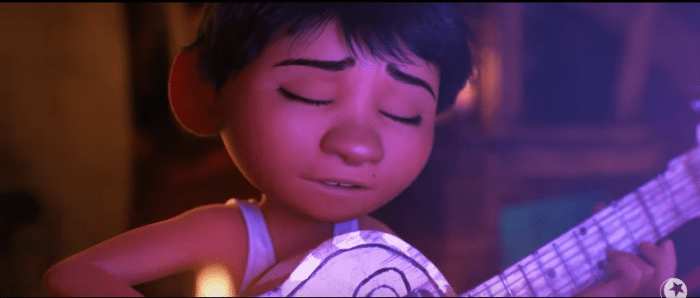By Joy Baynes


As Coco emerges as the clear Oscar front-runner for the Best Animated Film, the Mexican American community is not the only one celebrating. For me, as a Korean American in an era where Korean culture is often equated with nuclear threats and back-and-forth name calling, Coco served a breath of fresh air. It served as a reminder of the beauty of my Korean roots, in a spectacular honoring of the celebration of family, strength, and perseverance—something precious in many cultures, often lost here in America.
If you haven’t seen Coco, the movie offers a beautiful portrayal of deeply rooted Mexican traditions and a little boy conflicted in pursuing his musical dream in a family where music is banned. While most Disney happy endings taint the true significance of life, Coco captured more complicated emotions and raw relationships.
As a daughter of a first-generation Korean immigrant, I was struck by how much Coco reminded me of my Korean roots. Where Coco’s family business made shoes for generations, my family ran a garlic and fishcake business. Where Coco has Día de los Muertos, Koreans have the annual Chuseok celebration in September, honoring ancestors during fall harvest by setting out elaborate food displays with pictures of the deceased.
Many Korean families also travel back to their hometowns to tend to the graves of their immediate ancestors during this time. Chuseok is one of the biggest holidays of the year and the preparation is as fierce as it is for Coco’s family, as they prepare to welcome their ancestors. And when Coco showed strong family ties in a collectivist framework, I was reminded of living with my maternal grandparents, my uncle and his family in the 1980s. In a multi-room structure around a shared courtyard, we all ate in one room and slept in another. My grandmother often rented out extra rooms to passersby for 8,000 won a night (about $8). In modern-day Korea, children still usually live with their parents until they get married, and parents and in-laws move in with their children as they age.
Perhaps most important for me was the way Coco captured the strength and fierceness of women, especially aging ones. In the film, the abuelita serves as matriarch, true to her family’s tradition of shoemaking and defending steadfast beliefs passed down from generation to generation that rejected music in all forms, at all costs. Throughout the movie, she literally chases away music with her shoe in her hand. At one point, she swats Miguel, the main character, and destroys his guitar. In my imaginary Korean version of the movie, my mother would be Miguel, and his guitar her weaving loom. She dreamed of a career in weaving, but my halmoni, (Korean for grandmother), viewed my mom’s passion as a threat to their family business and forbade it. My mother left home to pursue her dream and ended up marrying my American father, whom she met at one of Korea’s many military bases occupied by the U.S. military. With no one to carry on her family business, my 88-year-old grandmother —up until a few years ago— would sell fishcakes balanced high on her head and peel and sell garlic for $2 a pound, spending hours in what fitness buffs now call the “kimchi squat.”
Korean culture, like Coco’s, celebrates and respects visible signs of aging (this despite a curiously high rate of plastic surgery, particularly eye lift surgery among women as young as 15). In recent years, Korea’s Confucian tradition of younger generations caring for older has waned and more Koreans are living alone. Despite these trends, for the most part, aging is celebrated and honored: lavish feasts and parties are thrown for 60th, 70th, and 80th birthday parties in Korea to honor a time when people did not live into their 60s. The 60th birthday is also the day when one completes their zodiacal cycle and begins another 60-year cycle.
In an era of suspicion of immigrants and other cultures, Coco’s story is one we can all embrace.
***
Joy Baynes is a family nurse practitioner in Tuscon. She is a second-generation Korean-American.


